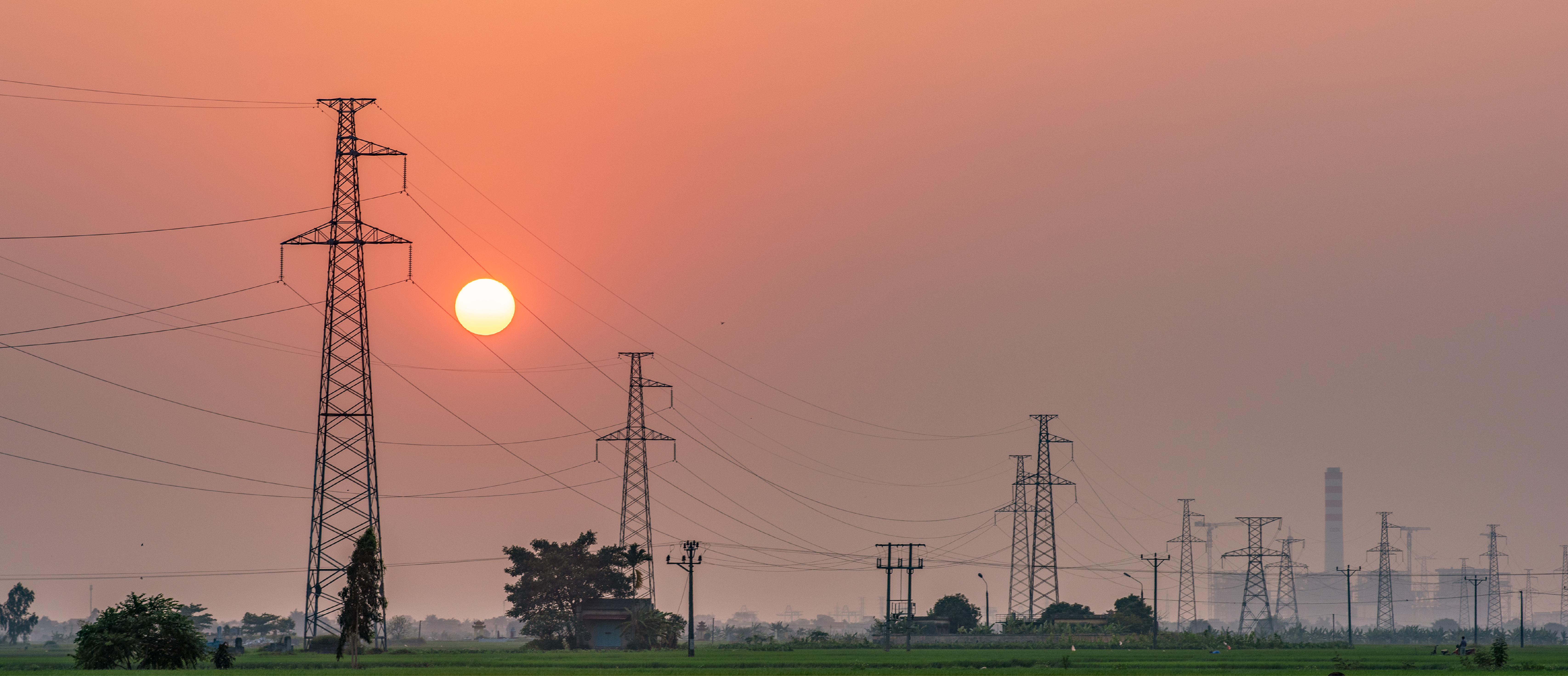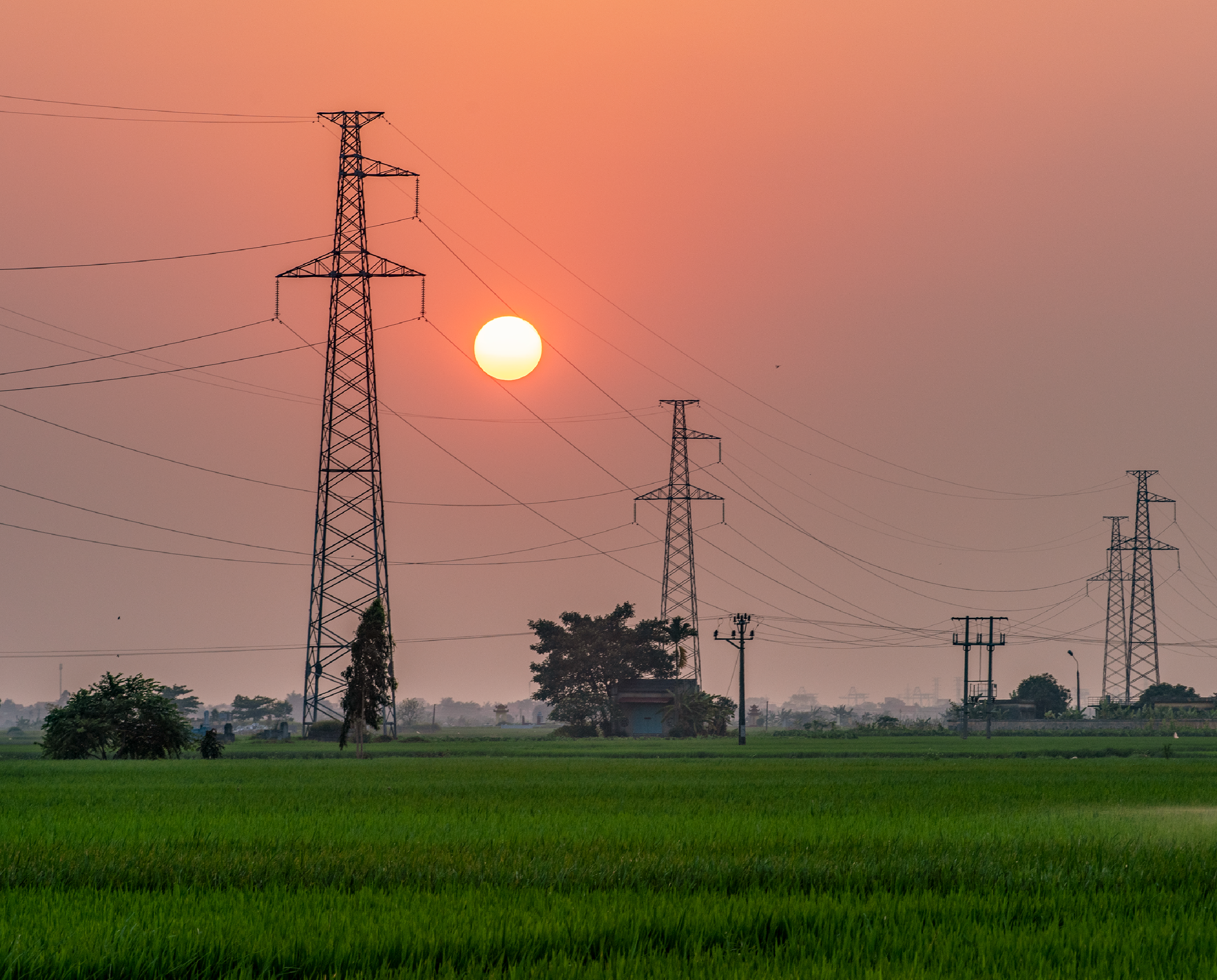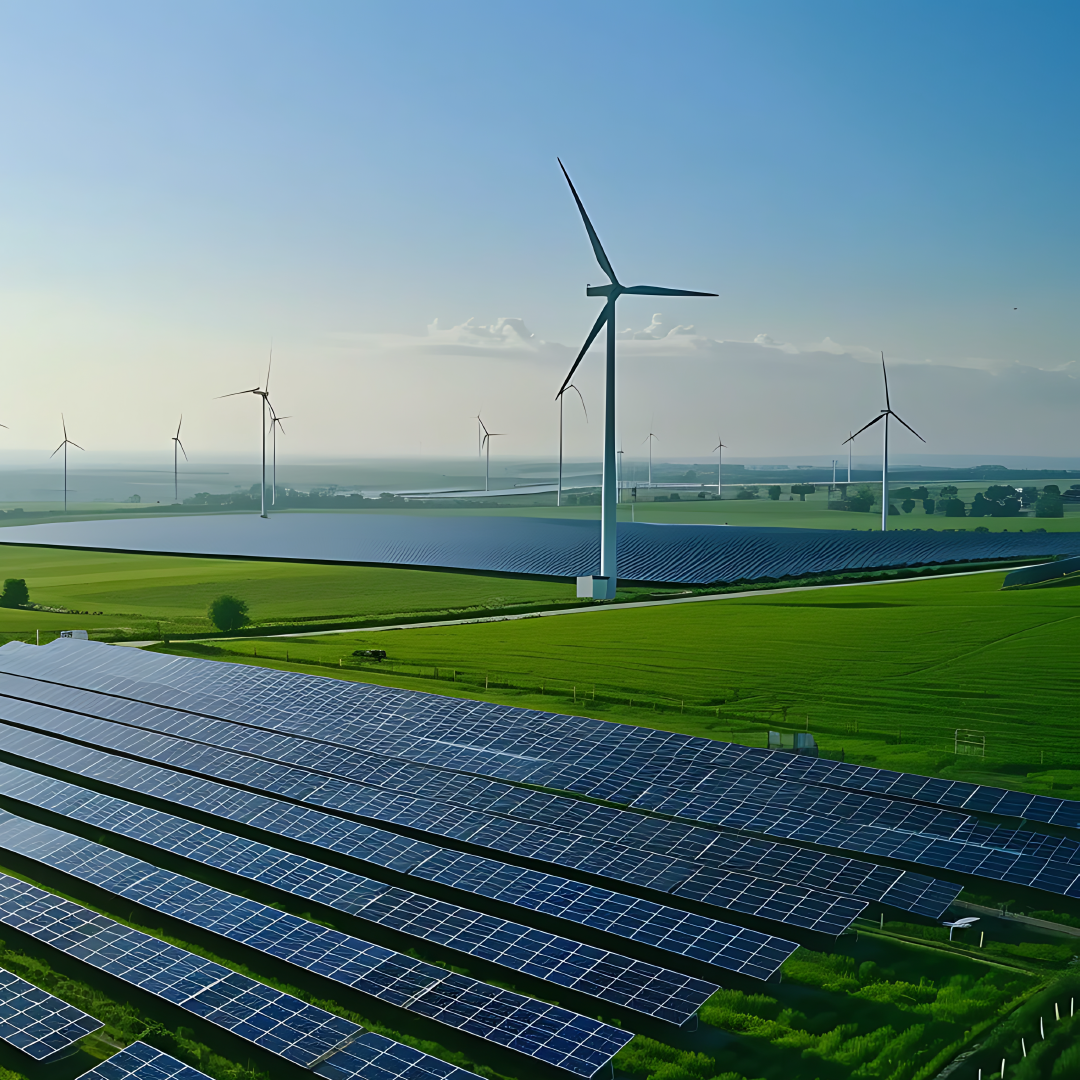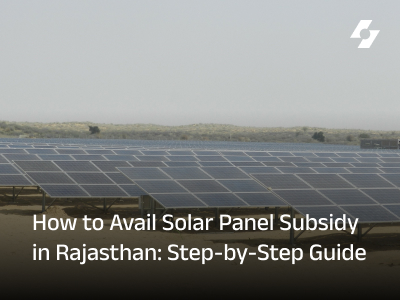If electricity were a relay race, the Interstate Transmission System would be the smooth baton handoff that will keep India’s renewable power running across the national grid. Imagine a highway where energy speeds across state borders, ensuring that industries and homes never face a blackout.
From sun-soaked Rajasthan to wind-rich Tamil Nadu, states and industries are tapping into this vast network to harness renewable energy like never before.
But who is leading the charge, and what are the emerging trends in Interstate Transmission System? Let us dive into India’s ISTS evolution, uncover its benefits, and see how this game-changing infrastructure is shaping the future of energy.
What is ISTS & The Role of ISTS in India’s Energy Landscape?
The Interstate Transmission System is a high-voltage power transmission network that enables electricity to flow seamlessly across state borders in India. It connects power-rich regions with energy-deficient areas. This ensures a balanced and efficient distribution of electricity.
Managed by the Central Transmission Utility of India Limited (CTUIL), ISTS operates at voltages above 132 kV and reduces transmission losses and enhances grid stability. This system allows solar and wind power to be transmitted nationwide and plays a crucial role in large-scale ISTS renewable energy projects.
ISTS eliminates state-wise transmission restrictions and creates a unified energy market where electricity can be supplied based on demand. Overcoming geographical constraints, ISTS makes the power sector more reliable and efficient.
The Role of ISTS in India’s Energy Landscape
The Interstate Transmission System is the foundation of India’s transition to clean energy. It enables large-scale ISTS solar and ISTS wind energy projects to supply power across multiple states.
Many renewable-rich regions, such as Rajasthan and Gujarat, generate excess solar and wind power, while industrial hubs like Maharashtra and Tamil Nadu require more electricity.
ISTS bridges this gap and ensures surplus energy reaches high-demand areas. Additionally, government incentives like ISTS transmission charge waivers have encouraged industries to procure renewable energy by reducing dependence on fossil fuels.
ISTS strengthens the national grid and integrates sustainable energy sources. It is driving India toward its decarbonization goals and supporting India’s vision of having 500 GW RE capacity by 2030.
How Does the Interstate Transmission System Work?
The Interstate Transmission System ensures the smooth transfer of electricity across states. It helps distribute power efficiently to high-demand areas from renewable energy sources like ISTS solar and ISTS wind energy. This is how it works:
- Power Generation: Electricity is generated from various sources, including solar farms, wind parks, hydro plants, and thermal stations. Renewable-rich states like Rajasthan, Gujarat, and Tamil Nadu contribute significantly.
- Grid Connection: The generated power is transmitted to ISTS substations, which are high-voltage facilities managed by the Central Transmission Utility (CTU). These substations step up the voltage to reduce transmission losses.
- High-Voltage Transmission: The electricity is transported through a network of 132 kV and above transmission lines that span multiple states, ensuring minimal energy loss over long distances.
- Load Management: The Regional Load Dispatch Centers (RLDCs) and the National Load Dispatch Center (NLDC) monitor and regulate electricity flow, ensuring supply matches demand.
- Distribution to Consumers: Power is stepped down at state-level substations and supplied to industries, businesses, and residential areas via the State Transmission Utility (STU) and local distribution networks.
ISTS Impact on Solar Energy Projects
The growth of ISTS solar projects has been a game-changer for India’s renewable sector. ISTS allows solar power generated in high-irradiation states to be transmitted across the country. This way it reduces dependency on fossil fuels and promotes sustainability. It also helps states which have a lot of energy demand but are renewable energy sources deficient.
Additionally, waivers on ISTS transmission charges (100% till June 2025) have made solar energy projects more financially viable for developers and commercial consumers.
Subscribe to our newsletter
What are the Advantages of ISTS?
The 5 major advantages of the Interstate Transmission System are:
1. Efficient Energy Distribution
The Interstate Transmission System ensures electricity flows smoothly between power-rich and power-deficient states. Renewable energy hubs like Rajasthan and Gujarat generate surplus solar and wind power, while industrial states like Maharashtra and Tamil Nadu have high energy demands.
ISTS bridges this gap by preventing electricity shortages and reducing dependency on costly local power generation.
2. Boosts Renewable Integration
ISTS plays a key role in expanding ISTS renewable energy by enabling large-scale solar and wind projects to supply power across multiple states. Without ISTS, many renewable-rich states would struggle to distribute their excess electricity and this would limit clean energy adoption.
ISTS strengthens India’s shift toward a greener energy mix, by connecting these regions.
3. Cost-Effective
ISTS reduces reliance on expensive thermal power plants, which use costly fossil fuels by transmitting electricity over long distances. Instead, industries and businesses can obtain ISTS solar or wind energy at lower rates, thereby leading to significant cost savings.
The availability of renewable power through ISTS makes clean energy a viable alternative to conventional sources.
4. Supports Industrial Growth
Industries require uninterrupted and affordable electricity to remain competitive. ISTS allows companies to sign Power Purchase Agreements (PPAs) with renewable energy developers across India, ensuring a steady supply of clean power. This helps industries lower operational costs, reduce carbon footprints, and comply with sustainability regulations.
5. Grid Stability
A well-connected ISTS network strengthens India’s electricity infrastructure by ensuring efficient load balancing and reducing power losses. It prevents localized blackouts and helps manage fluctuations caused by variable renewable energy sources like solar and wind.
ISTS will be crucial in maintaining a stable and reliable power grid as India’s energy demand grows.
India’s ISTS Evolution: Milestones & Policy Framework
The journey of the Interstate Transmission System in India started in 1992 with efforts to unite fragmented regional grids into a single national network.
Over the years, systematic grid integration led to the landmark achievement of ‘One Nation, One Grid’ in 2013. This ensures seamless electricity transmission across states and improves power availability.
The key policies that have shaped ISTS adoption are:
- National Tariff Policy (2016): This policy introduced ISTS transmission charge waivers for solar and wind projects, making renewable energy more cost-competitive. It encouraged industries and businesses to procure green energy from different states without additional financial burden.
- General Network Access (GNA) Regulations (2023): These regulations simplified ISTS connectivity by removing long-term access constraints, allowing renewable energy developers and industries to utilise ISTS power more efficiently.
- ISTS Waiver Policy: While waivers have supported renewable energy expansion, they will be phased out by 2028, potentially increasing costs for new projects and impacting future investment in ISTS-based solar and wind energy projects.
Emerging Trends and Future Prospects for ISTS (Interstate Transmission System)
The emerging trends that will boost and be the roadmap for prospects for the Interstate Transmission System are as follows:
- Green Hydrogen Integration: As India accelerates its green hydrogen production under the National Green Hydrogen Mission, the technology required has a massive power demand and ISTS will play a crucial role in supplying renewable energy to hydrogen plants.
- Advanced Storage Solutions: Battery Energy Storage Systems (BESS) will complement ISTS by storing excess solar and wind energy. This will enable a stable power supply even when renewable generation fluctuates.
- Complex Energy Solutions: Firm and Dispatchable Renewable Energy (FDRE) solutions are particularly well-suited for deployment through the Inter-State Transmission System (ISTS), as ISTS enables reliable delivery of firm, round-the-clock renewable power across regional boundaries.
- Market-Based Models: ISTS plants enable efficient implementation of mechanisms such as Contracts-for-Difference (CfD), while also allowing power to be sold directly on exchanges within the CTU periphery – facilitating seamless and optimized integration of renewable energy across the grid.
Challenges in ISTS Implementation
While the Interstate Transmission System has transformed India’s power sector, its adoption still faces several roadblocks:
1. Infrastructure Constraints
Many ISTS substations are overloaded, leading to long wait times for project approvals and connectivity. Renewable energy developers often face delays exceeding a year, slowing the expansion of ISTS solar and ISTS wind energy projects. The lack of adequate transmission infrastructure limits the full potential of renewable energy integration.
2. Regulatory Uncertainty
The phasing out of ISTS waivers by 2028 raises concerns about higher costs for new projects. Without these incentives, industries and businesses may find ISTS-based power less attractive, reducing investments in ISTS renewable energy projects.
3. Application Complexities
The approval process for ISTS connectivity involves multiple agencies, including the Central Transmission Utility (CTU), State Transmission Utilities (STUs), and Load Dispatch Centers (LDCs). This complexity leads to delays and increased costs.
4. State-Level Resistance
Some states impose restrictions on ISTS connectivity to protect their local DISCOM revenues, discouraging industries from procuring power through ISTS. These barriers slow the overall adoption of ISTS in India and limit its benefits.
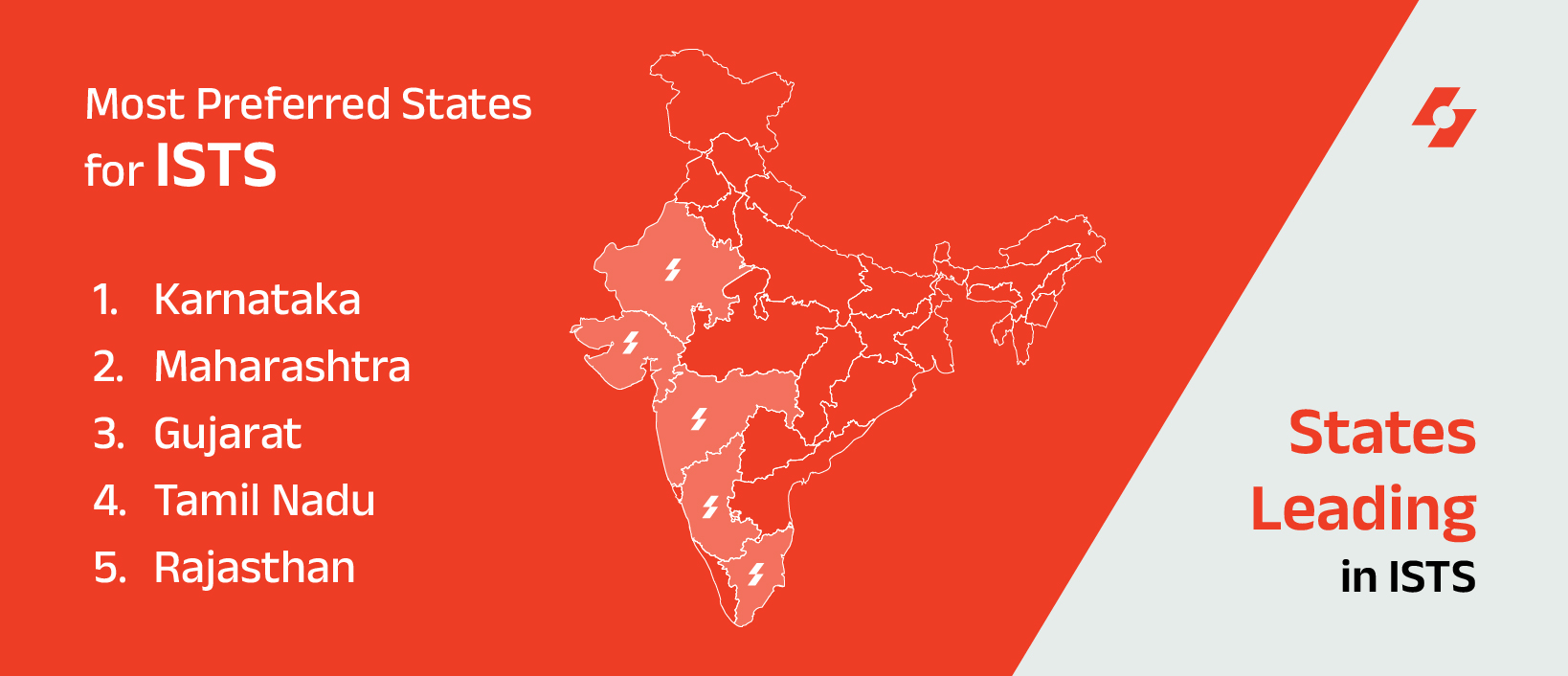
Leading Indian States in ISTS Adoption
Leading States
- Karnataka has significant ISTS solar and wind capacity, ensuring strong renewable power generation and distribution.
- Maharashtra has a well-developed ISTS infrastructure and high industrial electricity demand, making it a major consumer of interstate power. Check out Maharashtra’s open access policy.
- Gujarat has progressive renewable energy policies and a robust transmission network, supporting seamless ISTS.
- Tamil Nadu is a leader in ISTS wind energy and solar projects, leveraging its strong renewable energy capacity.
- Rajasthan benefits from high solar potential and multiple ISTS-connected projects, making it a major renewable energy exporter.
